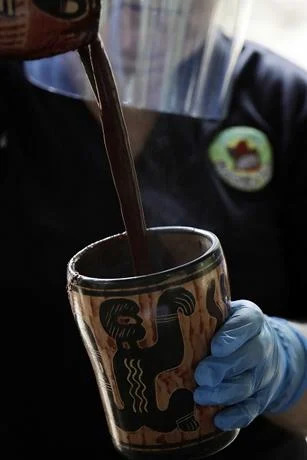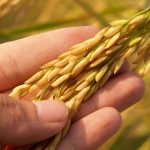Cocoa, a complete food of the gods

Every July 7, World Cocoa Day is celebrated, an initiative proposed in 2010 by the International Organization of Cocoa Producers (ICCO) and the French Academy of Master Chocolatiers and Confectioners.
According to recent archaeological research, the origin of cocoa’s cultivation and consumption dates back to 5,300 years ago in the Amazon region, in tropical and subtropical areas of America.
Cocoa has nutrients such as fiber, proteins, carbohydrates, and minerals, which favor cell and tissue renewal. In addition, it has antioxidant properties, which help reduce cholesterol levels, stress, and blood pressure.
Cocoa, with antioxidant properties, provides essential vitamins and minerals and promotes mood by releasing endorphins. It is grown in the tropical belt of the equatorial latitudes, between 20 degrees north and south latitude, favored by climatic factors such as temperature and rainfall.
World Cocoa Day is an initiative proposed in 2010 by the International Organization of Cocoa Producers (ICCO) and the French Academy of Master Chocolatiers and Confectioners, celebrated annually every July 7. The ICCO is an intergovernmental organization established in 1973 under the auspices of the United Nations and operates within the framework of the International Cocoa Agreements.
Fans of this fruit can attend workshops and tastings, visit the Chocolate Museum in Cologne (Germany) or participate in social networks through the hashtag #DiadelCacao.
In addition, every September 13, International Chocolate Day is commemorated worldwide, a product processed from the cocoa bean with sugar.
According to recent archaeological research, the origin of cocoa’s cultivation and consumption dates back to 5,300 years ago in the Amazon region, in tropical and subtropical areas of America.
It is estimated that the ancient Mesoamerican settlers who discovered this fruit transported it to Central America, spreading to South America and Mexico. In addition, there is evidence of its use by several pre-Columbian civilizations, such as the Mayans, the Incas, and the Aztecs.
It was used as a food ingredient, an energizer, and a natural tonic to protect against diseases and as currency for trade.
Cocoa arrived in Europe at the beginning of the 16th century, after the conquest and colonization of America, by introducing the xocóatl (chocolate drink) recipe. The first place it was made was the Monasterio de Piedra, located in the Zaragoza municipality of Nuévalos (Spain).
Cocoa mixed with sugar became popular in European courts, and its cultivation spread to other producing areas such as Asia and Africa.
The food of the gods
The cacao or cacao tree, whose scientific name is Theobroma, food of the gods in Greek, is an evergreen plant of the Malvaceae family native to the Amazon basin.
According to linguistic theory, the term comes from the Olmecs’ language, called the tree kawakawa. The Mayans called it kabkaj (bitter juice), and after several phonetic transformations, it evolved into cacaoatl.

The plant has a maximum height of 8 meters and takes five years to bear its first fruits, which mature in 6 months. Its natural habitat is humid tropical forests with a warm climate.
Its fruit, which weighs approximately 450 grams when ripe, is shaped like an elongated, oval berry. It contains about 35 brown seeds, with a bitter and astringent taste, covered with a sweet white pulp.
Cocoa powder is the main processed product used to produce chocolate, with which sweets and drinks are made.
The pulp is used to make beverages, the shell to make animal feed, and the butter to make medicines and beauty products.
Cocoa has nutrients such as fiber, proteins, carbohydrates, and minerals, which favor cell and tissue renewal.
In addition, it has antioxidant properties, which help reduce cholesterol levels, stress, and blood pressure, and a stimulating effect due to theobromine, which favors the composition of serotonin in the body.
World production
Although cocoa originates from Latin America, its cultivation is currently geographically located in West Africa and Asia. The total production of cocoa (whole or split, raw or roasted) in the world in 2020 amounted to 8,500 million dollars, representing 0.051% of total world trade, according to data from the Observatory of Economic Complexity (OEC).
The leading exporters were the Ivory Coast, with 3,500 million (41.2%), Ghana, with 1,200 million (15%), and Ecuador, which with 800 million (9.6%), was the country in which exports grew the most. Exports, followed by Belgium and Papua New Guinea.
The leading importers were the Netherlands, with 1.7 billion (20.8%), the United States, with 990 million (11.6%), and Malaysia, with 920 million (10.8%). On the other hand, the United States, Turkey, the United Kingdom, and Italy were the countries where imports increased the most.
According to the ICCO April 2022 Market Report, the sector is facing supply chain bottlenecks and inflationary pressures stemming from the global COVID-19 pandemic and the Russian invasion of Ukraine.
International reference prices have shot up to $2,745 per metric ton, their highest level since December 2020. Shortfalls cause this upward trend in crop production and higher logistics costs.

















